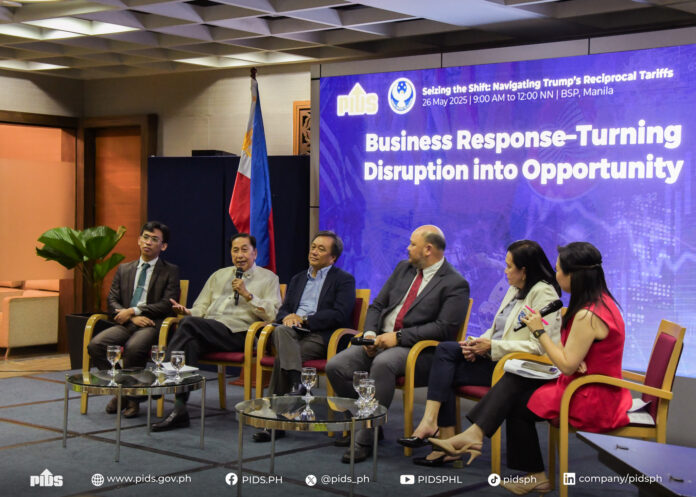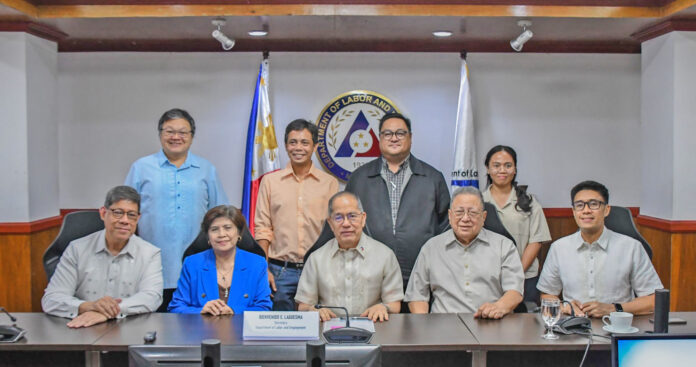The Philippines is bracing for possible economic shocks, with just weeks left before the United States ends its 90-day pause on new tariffs, according to economists from the Philippine Institute for Development Studies (PIDS) and the Bangko Sentral ng Pilipinas (BSP).
Economists said while the country is not at the top of Washington’s target list, its key exports like semiconductors and coconut oil could face pressure from America’s shifting trade policy.
The temporary universal 10-percent tariff, rolled out on April 5, replaced more country-specific rates and bought negotiators some time. But the window is closing fast.
While subject to a comparatively lower 17 percent tariff than many neighboring countries, the Philippines still faces significant economic implications and broader volatility threats amid this high-stakes environment.
The PIDS and the BSP hosted a policy forum, “Seizing the Shift: Navigating Trump’s Reciprocal Tariffs,” on May 26, 2025.
“The Philippine economy, however, remains resilient, with inflation at a manageable 1.4 percent as of April 2025. This gives us extra degrees of freedom to ease monetary policy and support goal,” said BSP Deputy Governor Zeno Ronald Abenoja.
Rodrigo Balbontin of the Washington-based Information Technology and Innovation Foundation (ITIF) delivered a sobering view of the bigger picture: the U.S.-China trade war is now pulling more countries into its orbit and increasing global uncertainty.
“The trade war, driven by geopolitical and economic tensions, risks shrinking the potential of not only the US but also global economies,” he said.
Balbontin cited the “Hamilton Index,” which tracks how countries are performing in advanced industries. It shows China’s rapid ascent, while the U.S., once a powerhouse, is seeing the relative decline of its industrial base.
He said that while the Philippines holds only a modest share of this global output, it could still feel the heat if tariffs hit electronics and manufacturing inputs.
“While the Philippines is not among the most heavily targeted countries by the U.S. tariffs, the new regime threatens to disrupt key sectors, especially electronics and manufacturing components,” he said.
Balbontin urged proactive engagement, recommending the Philippines accelerate negotiations to avoid tariffs, strengthen intellectual property protections, and consider increased military spending to enhance geopolitical positioning.
Dr. Rafaelita Aldaba, PIDS emeritus research fellow, broke down how ASEAN countries are being affected differently. While the Philippines and Malaysia fall under a “moderate risk” category, the country’s export profile makes it vulnerable to US trade actions, she said.
“Among ASEAN countries, the Philippines has one of the smallest export volumes to the US, but the US still accounts for about 20 percent of our exports, primarily in electronics like semiconductors, coconut oil, and printing machines,” Aldaba said.
She said these goods are among those facing price pressures under the current tariff scheme. Aldaba urged the government to align its trade and industrial strategies to help local industries become more competitive and resilient.
“This calls for enhanced cooperation within ASEAN to diversify supply chains and attract production relocation opportunities,” she said.
The forum’s panel discussion brought together business leaders and policymakers who shared how their sectors are adapting and what reforms could help buffer future shocks.
They pointed to the need for better coordination between private and public sectors, especially on improving supply chain flexibility and reducing dependence on single markets.
PIDS president Dr. Aniceto Orbeta Jr. called for a unified and forward-looking approach. “The policies we shape, the insights we share, and the partnerships we forge will define the trajectory of our nation. Let us commit ourselves to ensuring that the Philippines not only survives but thrives in an ever-changing world,” he said.








